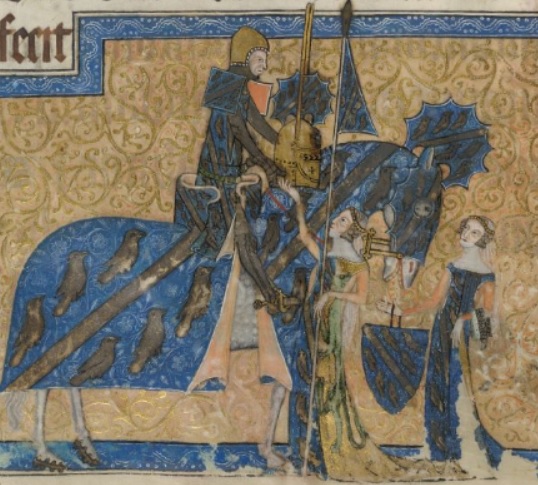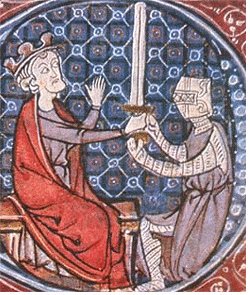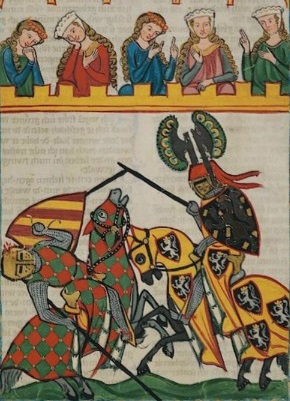
When a Knight Won His Spurs

Introduction
In the Middle Ages the knight played a very important role in society. He was the local lord, and the backbone of the king's army.
What was a medieval knight like? If you had lived 20 years ago, you would have 'known' before you went to secondary school, because you would have sung this hymn in your Primary School Assembly:
When a knight won his spurs in the stories of old
He was gentle and brave, he was gallant and bold.
With a lance on his arm and a sword in his hand
For God and for valour he rode through the land.
The hymn, written in 1931 by the English writer and radio celebrity, Jan Struther, created many children's interpretation of what a medieval knight was like. When I was a teenager, my girlfriend was always disappointed that I didn't arrive on a white horse to carry her away, but instead turned up in a bright orange Mini to take her to the local cinema!
By the end of this Chapter, you will have formed your own – hopefully better founded – interpretation of what a medieval knight was like.
Study this webpage, then answer the question sheet by clicking on the 'Time to Work' icon at the top of the page.
Links:
The following websites will help you research further:
The Knight:
•
Mr Donn's site
• The
ThinkQuest site • A website on
Chivalry and Courtly Love • British Library webpage on
Courtly Love
![]()
1 Chaucer's Knight
This description of a knight comes from Geoffrey Chaucer's Canterbury Tales (c.1386), the story of a group of pilgrims on their way to Canterbury.
There was a KNIGHT, a most respected man,
Who from the day on which he first began
To ride had followed chivalry,
Truth, duty, generosity and courtesy.
He had done bravely in his country's wars
And ridden into battle, no man more:
To fifteen deadly battles he had been sent
And jousted for his faith at tournaments...
He was of greatest worth in everybody's eyes.
Yet though he was famous, he was wise
And in his manners modest as a maid.
He never yet a nasty thing had said
In all his life to anyone, come what might;
He was a true, a perfect gentle knight.
2 Sir Geoffrey Luttrell
In this picture from the Luttrell Psalter (c.1340), Sir Geoffrey Luttrell is handed his helmet and shield by his wife and daughter.
Is he going to joust at a tournament? Or is he riding off to war?

3 The Knight's Code
When a young noble became a knight, he had to behave nobly.
This advice on how to behave was written by Eustace Deschamps, a 14th-century poet.
You must lead a new life:
Keeping watch in prayer,
Running away from sin, pride and wrong-doing;
Defending the Church,
Helping the widow and the orphan.
Be bold and protect the people.
Be loyal and brave, taking nothing from others.
This is how a knight should behave.
He should be humble of heart
And do deeds of chivalry;
He should go to tournaments
and joust for his lady-love.
4 The Knighting Ceremony
The knight promises obedience to the king, and is given his sword and spurs.

5 A Tournament (the myth)
A twelfth-century tournament. Knights joust while their ladies watch.

6 Courtly Love
It was fashionable for a knight to fall in love with a married lady.
He devoted his life to her, longing for a love he could never have.
This song was written by Arnaut Daniel (c.1200), a knight and wandering minstrel (singer).
I serve the fairest lady
In the world (and say so openly).
I am hers from head to toe,
And even in cold winds
The love raining in my heart
Keeps me warm.
My heart burns and breaks for her:
And if she does not heal me
With a kiss before the new year,
I will die...
I am Arnaut, who gathers the wind
And chases rabbits on an ox
And swims against the incoming tide.